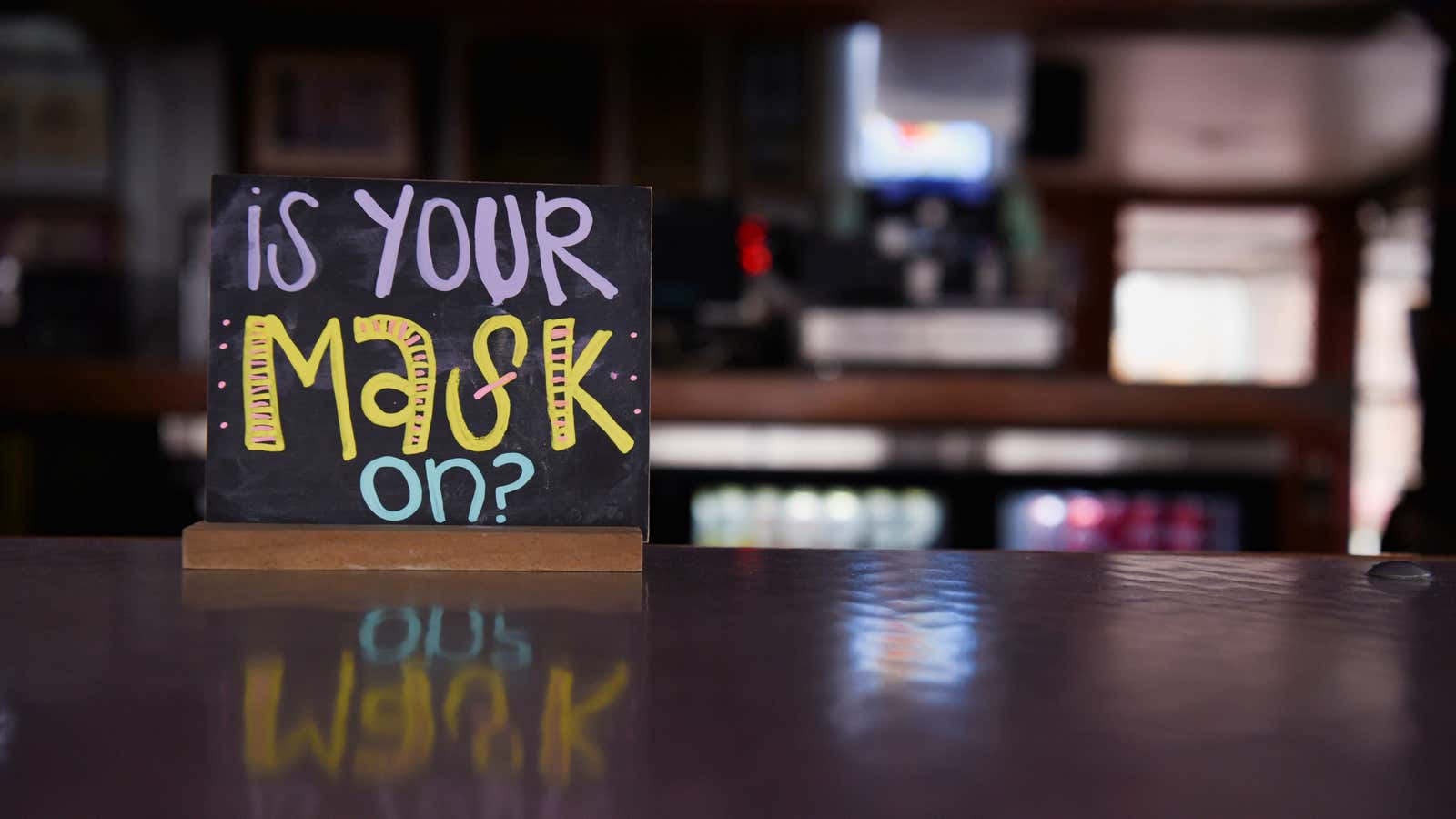Less than a week after Philadelphia became the first major city in the US to reinstate a public mask mandate, the city is backing off its plan following massive backlash from residents and businesses.
On April 11, Philadelphia was briefly the only major city in the US to reinstate a public mask mandate for indoor spaces after seeing a rapid increase in positive cases. But on April 21, the city’s Board of Health voted to rescind the mandate, saying that hospitalizations had decreased and cases had leveled off.
Philadelphia is the only major US city with a covid plan automatically triggered by higher case counts. Philadelphia saw cases rise by more than 50% in 10 days, due to the highly-contagious omicron BA.2 variant that has taken hold of the region in recent months. The city’s health commissioner Dr. Cherly Bettigole said that the city acted quickly to avoid a wave of hospitalizations and deaths the city endured during previous covid surges. An earlier spike in 2021 resulted in an average of 1,000 cases and 18 deaths per week.
But Philadelphia’s public health response will likely remain an outlier in the US. As cities monitor local case counts with no plans to return to masking in public, most are betting their citizens will accept more risk rather than another wave of mask mandates.
Why Philly donned, then ditched, masks again
Philadelphia ended an earlier mask mandate in early March like many other places as cases faded, but then became the only major US city to escalate its covid measures in direct response to an increase in new infections. The city’s four-tiered covid response plan lays out different combinations of specific pandemic “markers,” like case counts and hospitalizations, and lists the safety measures the city must take in response. The recent case spike moved Philadelphia from Level 1 covid response, or “all clear,” to Level 2, or “caution” requiring people to wear masks inside businesses and other public places (not include a proof of vaccination or testing requirement).
This differs from most cities’ covid plans that place more emphasis on available beds in local hospitals. Based on updated guidance from the Centers for Disease Control, if a city or town has fewer than 200 covid cases per 100,000 people and fewer than 10 covid hospital admissions within a week, it’s considered to be at “low” risk. Risk levels rise as hospital capacity falls.
Based on these indicators, most major cities in the US including New York, Los Angeles, Chicago, and Washington DC, are still reporting “low” covid risk, with fewer than 150 cases per 100,000. Philadelphia has averaged fewer than 100 cases per 100,000, comparable to these other cities, but the jump from a 1.4% weekly positivity rate (the share of reported positive covid tests) to nearly 6% triggered the recent measures.
Once Philadelphia’s new mask mandate was in place, residents opposed it almost immediately. A group of business owners and residents filed a lawsuit to overturn the mandate, saying the city didn’t have the authority to impose it.
Health commissioner Dr. Cherly Bettigole, who originally announced the new mandate, reported a decrease in hospitalizations to the Board of Health at a public meeting on Thursday, leading them to unwind the measures.
“We’re in a situation that we really had not anticipated being this soon but it is good news,” Bettigole said at the meeting.
Most US cities aren’t following Philadelphia’s lead
American cities are now taking a “wait and see” approach. Denver’s health department “utilizes a wholistic picture of the impact of COVID-19 on [its] community,” a representative wrote by email on Wednesday. In New York City, mayor Eric Adams (who recently tested positive for covid himself) responded to a question about reintroducing masks by saying he would listen to health experts and encourage people to get vaccinations and booster shots. Even San Francisco, which has adopted some of the US’s earliest and most aggressive pandemic measures, isn’t planning on reintroducing a mask mandate despite seeing a recent uptick in cases (hospitalizations, however, still remain low).
Public health officials face growing political pressure against strict health measures. Two years into the pandemic, Americans are reporting rising covid fatigue: 75% of Americans said they were “tired” of the pandemic at the start of 2022, and barely half of Americans supported local masking and social distancing guidelines, according to a recent Monmouth University poll.
State and local politicians who’ve instituted lockdowns and mask mandates have endured political blowback. Strict covid policies in California contributed to a recall election for governor Gavin Newsom in September 2021 (which he ultimately withstood) but other politicians have lost their seats. School masking and closures became a flashpoint in Virginia’s 2021 gubernatorial race, and voters elected Republican Glenn Youngkin over the incumbent Democrat Terry McAuliffe, in what was seen as a rejection of McAuliffe’s covid policies. That’s in addition to dozens of anti-mask rallies that have taken place at city and state government buildings across the US, from Texas, to Ohio, to New Hampshire.
Local leaders balancing the demands of public health and public sentiment are hoping to wait as long as possible before taking aggressive measures against a pandemic many Americans are ready to put behind them.
